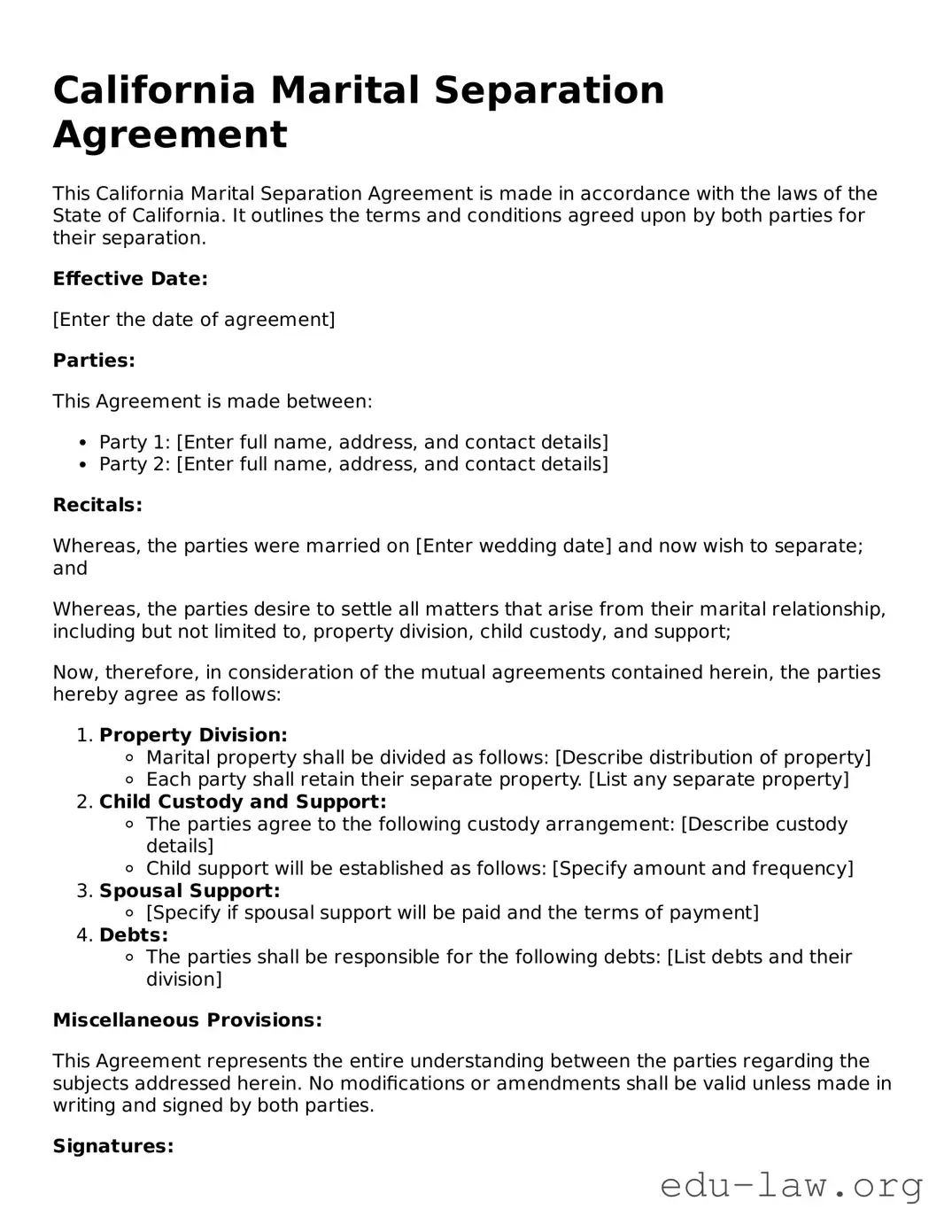California Marital Separation Agreement
This California Marital Separation Agreement is made in accordance with the laws of the State of California. It outlines the terms and conditions agreed upon by both parties for their separation.
Effective Date:
[Enter the date of agreement]
Parties:
This Agreement is made between:
- Party 1: [Enter full name, address, and contact details]
- Party 2: [Enter full name, address, and contact details]
Recitals:
Whereas, the parties were married on [Enter wedding date] and now wish to separate; and
Whereas, the parties desire to settle all matters that arise from their marital relationship, including but not limited to, property division, child custody, and support;
Now, therefore, in consideration of the mutual agreements contained herein, the parties hereby agree as follows:
- Property Division:
- Marital property shall be divided as follows: [Describe distribution of property]
- Each party shall retain their separate property. [List any separate property]
- Child Custody and Support:
- The parties agree to the following custody arrangement: [Describe custody details]
- Child support will be established as follows: [Specify amount and frequency]
- Spousal Support:
- [Specify if spousal support will be paid and the terms of payment]
- Debts:
- The parties shall be responsible for the following debts: [List debts and their division]
Miscellaneous Provisions:
This Agreement represents the entire understanding between the parties regarding the subjects addressed herein. No modifications or amendments shall be valid unless made in writing and signed by both parties.
Signatures:
IN WITNESS WHEREOF, the parties hereto have executed this Agreement as of the day and year first above written.
Signature of Party 1: _________________________ Date: ___________
Signature of Party 2: _________________________ Date: ___________
This document is intended as a template. Parties are encouraged to consult with a legal professional to ensure compliance with relevant laws and adequate protection of their interests.
